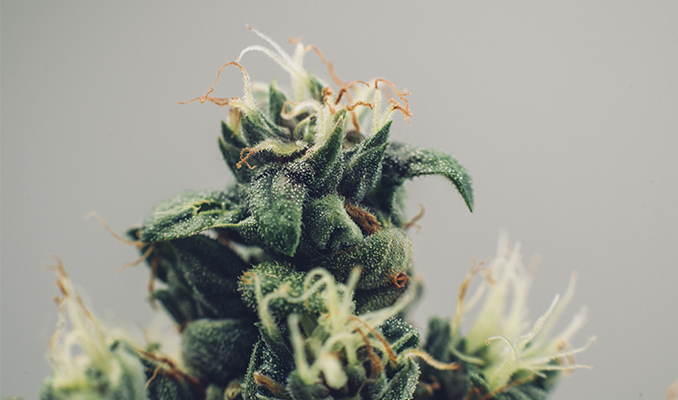What Are Cannabis Hybrids And How Are They Created?
Published :
May 5, 2018
Categories :
Strain information

Cannabis hybrids are plants that feature a mix of indica, sativa, and/or ruderalis genetics. Hybridisation allows for greater variety among cannabis strains, and more options for the modern day grower and consumer.
When strolling into a California cannabis dispensary or a Dutch coffeeshop, one glance at the menu is enough to seriously confuse first time customers, and even some more seasoned smokers. What are all these names? Are they just mere brands, or is there something more going on? Well, cannabis is an extremely diverse and multifaceted herb. Unlike many other substances, it can vary massively in effect from strain to strain. Anything from the cannabinoid content to the terpenes within can alter the effects that the smoker experiences.
The market is loaded with different strains, and many of these are hybrids.
WHAT ARE HYBRID STRAINS?
Hybrid strains are exactly what they sound like. They are a combination of the main subspecies of cannabis, sativa and indica. These two subspecies still belong to the same species of cannabis, but represent evolutionary differences that occurred over time. These differences manifest in the physical appearance of the plant, and the chemical composition.
Sativa strains are typically associated with a more cerebral and energetic high that is suitable for daytime use. Sativas are best utilised for creative endeavours and tasks that require focus and alertness.
On the other hand, indica strains are known for the stoning and physical body high that they produce. This kind of effect is much more compatible with evening use when winding down and relaxing. Indica strains are also associated with relieving pain and sleeping issues.
HOW ARE HYBRIDS MADE?
Hybridisation allows growers to select the most desirable traits of parent strains, and pass these on to the progeny. For instance, perhaps a breeder wants to create a strain with higher levels of THC, or greater amounts of a certain terpene.
A very topical example of the importance of hybrids can be seen as CBD becomes more popular and accepted as therapeutically viable. Today, breeders are looking to achieve the highly sought-after CBD:THC ratio of 1:1. This is achieved through careful selection and hybridisation, as there are no landrace strains that display this cannabinoid profile naturally and consistently.
Hybrids can occur in the wild, but they tend to be unstable. This means that new generations will express widely varying traits of their parents. Breeders can act to create more stable genes by inbreeding generations in an act known as backcrossing.

TYPES OF HYBRID STRAINS
Although hybrids consist of both indica and sativa genetics, they are often more genetically dominant in one over the other. As such, plants are likely to express more traits from the dominant parent.
A strain may also be only slightly more dominant in sativa or indica, displaying more balanced effects. With that said, hybridisation is an intriguing process in which a sativa-dominant plant, for example, may still display predominantly indica traits depending on the specific cultivar. Due to the vast array of genetics available, there is no cap on what can be achieved with the modern, next-gen hybrid.
In general, however, indica-dominant hybrids will generate more of a physical body high, yet may still have elements of a head high in the mix. Sativa-dominant hybrids will be more on the energetic end of the spectrum, offering smokers a cerebral high that evolves into a relaxing, stoney sensation.
True hybrids, or 50/50 hybrids, consist of an exact balance of 50% indica genetics and 50% sativa genetics. It makes sense then that these true hybrid strains offer a high that is well-rounded and contains evident traits of each parent.
THE THIRD SUBSPECIES: RUDERALIS
Hybrids can also be infused with the genetics of another cannabis subspecies known as ruderalis. Ruderalis is responsible for autoflowering genetics, and is used by breeders to introduce autoflowering genes into many classic strains. Ruderalis strains flower independent of photoperiod, and are quite hardy and resistant as they developed in the tough climates of Russia.
Growers tend to appreciate hybrids as most of the modern, stabilised varieties grow to manageable heights, but yield a significant amount. Indoor cultivators in particular have long avoided towering sativa strains given the confines of their grow space. Now, there are sativa-dominant hybrids and autoflowering sativas that can be grown in smaller spaces to great effect.
HOW TO USE HYBRIDS
Hybrids are used in the same way as any other variety of cannabis, but they allow the user more flexibility and variety. Instead of settling for a pure indica or sativa, smokers can elect to experience a mix of effects. This dial can be finely tuned, and users can go so far as to find out the exact dominance of a hybrid in order to achieve the effects they are looking for.
This is extremely useful, and allows consumers greater control over what they smoke, vape, or eat. Recreational users can tailor their high to fit their mood, and medicinal users now have a greater array of options to best soothe their condition. Want a strain that is going to relax your body but keep you focussed? Choose a hybrid. Want a strain that is going to kill pain, but keep you creative and energetic? Choose a hybrid. Now it’s up to you to seek out the best hybrid for your lifestyle and desires.






































